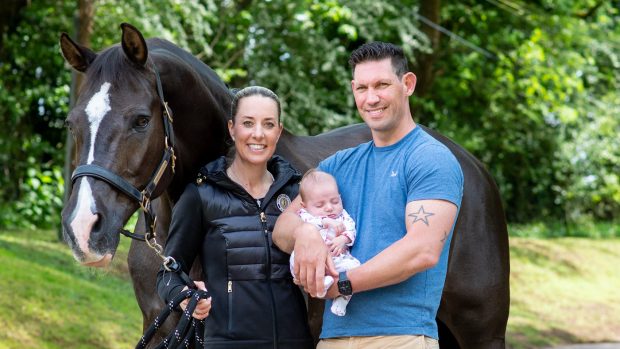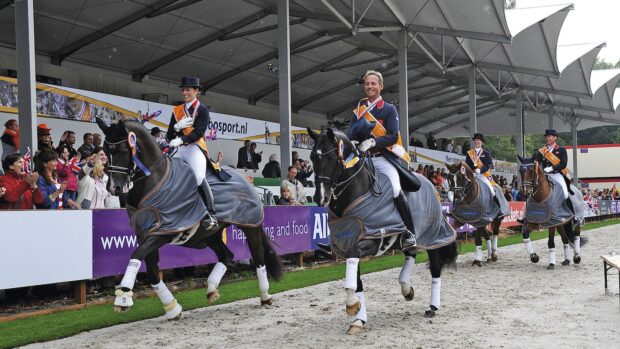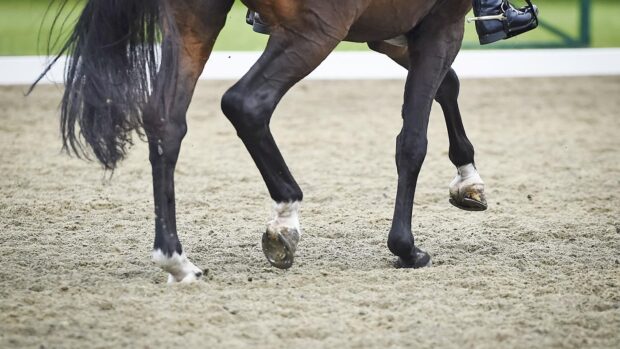Jo Hinnemann’s training method is a clear and simple interpretation of the tried and tested German scales of training and was clearly demonstrated at Addington Manor EC during the BEIB-sponsored British Dressage National Convention.
When the horse is trained correctly according to Jo Hinnemann’s system, which combines rhythm, relaxation (losgelassenheit), contact, impulsion and straightness through to collection, the horse is totally receptive to, and completely on the aids — this is known as durchlassigkeit, the state of total responsiveness.
Jo’s words of wisdom
- Suppleness — when I refer to suppleness I mean not only physical but also mental suppleness, which allows the horse to accept the work and progress.
- Connection — only if the jaw is free can everything go through, but the driving aids must activate the horse’s hindquarters first. Work at leg yield on a circle helps promote the correct angle of the jaw and consequently the required control of the neck.
- Corrections — must be made behind us and not in front of us.
- Concentration — the rider must give his full attention to the horse and the work in hand. In return, the horse must give the rider his full attention. To get a horse on the aids and concentrating, the rider should ride in a forward way, using a half-halt into each corner and riding forwards out of it. The horses should be “nicely nervous” — not tense but concerned enough to be attentive to the rider.
- Contact — there are three points of contact, the legs and seat, which come first, then the hand, which supports the seat and legs and can only be good when the seat and leg contact are correct. The rein contact should be elastic, with the poll the highest point and the ears level. With the nose in front of the vertical, the horse can make a bigger stride.
- Collection — to develop collection, work on transitions. I dream of transitions — forward and back, forward and back. Transitions and changes of tempo within a pace must be ridden correctly from seat and leg to work like an accordion, compressing and extending the horse’s body to promote gymnastic ability and develop collection.
- Simplicity — keep to the basic concepts, following the principles as laid down in the scales of training for all types of horses, no matter what level they work at. The word also reflects Jo’s training ethos of a simple, clear and logical progression, breaking down the training into achievable goals.
|
||
 |
||


 Get up to 19 issues FREE
Get up to 19 issues FREE TO SUBSCRIBE
TO SUBSCRIBE 


